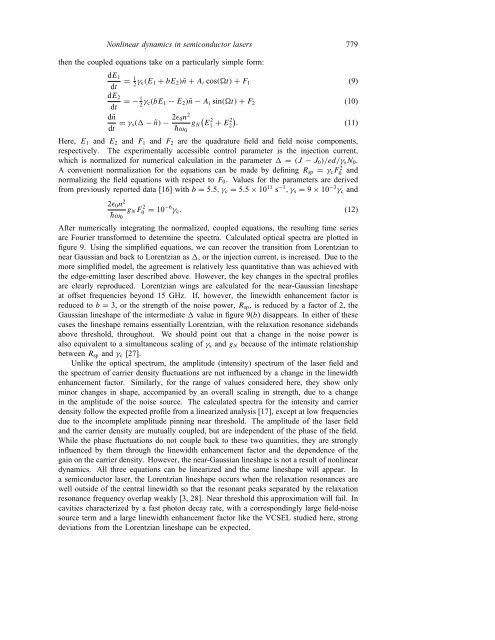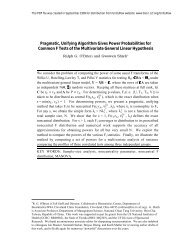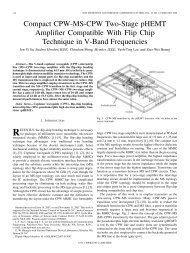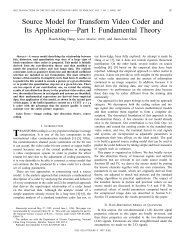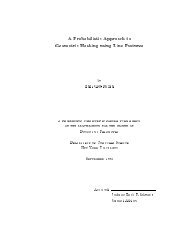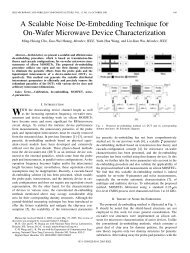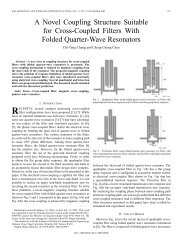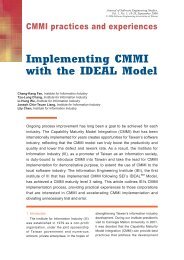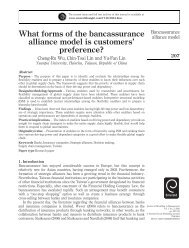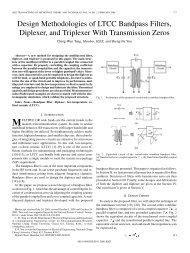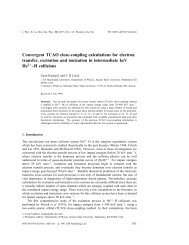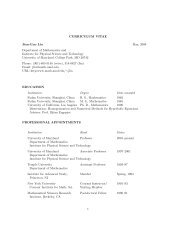Nonlinear dynamics induced by external optical injection in ...
Nonlinear dynamics induced by external optical injection in ...
Nonlinear dynamics induced by external optical injection in ...
Create successful ePaper yourself
Turn your PDF publications into a flip-book with our unique Google optimized e-Paper software.
<strong>Nonl<strong>in</strong>ear</strong> <strong>dynamics</strong> <strong>in</strong> semiconductor lasers 779<br />
then the coupled equations take on a particularly simple form:<br />
dE 1<br />
= 1 2<br />
dt<br />
γ c(E 1 + bE 2 )ñ + A i cos(t) + F 1 (9)<br />
dE 2<br />
=− 1 2<br />
dt<br />
γ c(bE 1 − E 2 )ñ − A i s<strong>in</strong>(t) + F 2 (10)<br />
dñ<br />
= γ s ( −ñ) − 2ɛ 0n 2 (<br />
g N E<br />
2<br />
dt<br />
¯hω 1 + E 2 )<br />
2 . (11)<br />
0<br />
Here, E 1 and E 2 and F 1 and F 2 are the quadrature field and field noise components,<br />
respectively. The experimentally accessible control parameter is the <strong><strong>in</strong>jection</strong> current,<br />
which is normalized for numerical calculation <strong>in</strong> the parameter = (J − J 0 )/ed/γ s N 0 .<br />
A convenient normalization for the equations can be made <strong>by</strong> def<strong>in</strong><strong>in</strong>g R sp = γ c F0<br />
2 and<br />
normaliz<strong>in</strong>g the field equations with respect to F 0 . Values for the parameters are derived<br />
from previously reported data [16] with b = 5.5,γ c =5.5×10 11 s −1 ,γ s =9×10 −3 γ c and<br />
2ɛ 0 n 2<br />
g N F0 2 ¯hω = 10−6 γ c . (12)<br />
0<br />
After numerically <strong>in</strong>tegrat<strong>in</strong>g the normalized, coupled equations, the result<strong>in</strong>g time series<br />
are Fourier transformed to determ<strong>in</strong>e the spectra. Calculated <strong>optical</strong> spectra are plotted <strong>in</strong><br />
figure 9. Us<strong>in</strong>g the simplified equations, we can recover the transition from Lorentzian to<br />
near Gaussian and back to Lorentzian as , or the <strong><strong>in</strong>jection</strong> current, is <strong>in</strong>creased. Due to the<br />
more simplified model, the agreement is relatively less quantitative than was achieved with<br />
the edge-emitt<strong>in</strong>g laser described above. However, the key changes <strong>in</strong> the spectral profiles<br />
are clearly reproduced. Lorentzian w<strong>in</strong>gs are calculated for the near-Gaussian l<strong>in</strong>eshape<br />
at offset frequencies beyond 15 GHz. If, however, the l<strong>in</strong>ewidth enhancement factor is<br />
reduced to b = 3, or the strength of the noise power, R sp , is reduced <strong>by</strong> a factor of 2, the<br />
Gaussian l<strong>in</strong>eshape of the <strong>in</strong>termediate value <strong>in</strong> figure 9(b) disappears. In either of these<br />
cases the l<strong>in</strong>eshape rema<strong>in</strong>s essentially Lorentzian, with the relaxation resonance sidebands<br />
above threshold, throughout. We should po<strong>in</strong>t out that a change <strong>in</strong> the noise power is<br />
also equivalent to a simultaneous scal<strong>in</strong>g of γ s and g N because of the <strong>in</strong>timate relationship<br />
between R sp and γ c [27].<br />
Unlike the <strong>optical</strong> spectrum, the amplitude (<strong>in</strong>tensity) spectrum of the laser field and<br />
the spectrum of carrier density fluctuations are not <strong>in</strong>fluenced <strong>by</strong> a change <strong>in</strong> the l<strong>in</strong>ewidth<br />
enhancement factor. Similarly, for the range of values considered here, they show only<br />
m<strong>in</strong>or changes <strong>in</strong> shape, accompanied <strong>by</strong> an overall scal<strong>in</strong>g <strong>in</strong> strength, due to a change<br />
<strong>in</strong> the amplitude of the noise source. The calculated spectra for the <strong>in</strong>tensity and carrier<br />
density follow the expected profile from a l<strong>in</strong>earized analysis [17], except at low frequencies<br />
due to the <strong>in</strong>complete amplitude p<strong>in</strong>n<strong>in</strong>g near threshold. The amplitude of the laser field<br />
and the carrier density are mutually coupled, but are <strong>in</strong>dependent of the phase of the field.<br />
While the phase fluctuations do not couple back to these two quantities, they are strongly<br />
<strong>in</strong>fluenced <strong>by</strong> them through the l<strong>in</strong>ewidth enhancement factor and the dependence of the<br />
ga<strong>in</strong> on the carrier density. However, the near-Gaussian l<strong>in</strong>eshape is not a result of nonl<strong>in</strong>ear<br />
<strong>dynamics</strong>. All three equations can be l<strong>in</strong>earized and the same l<strong>in</strong>eshape will appear. In<br />
a semiconductor laser, the Lorentzian l<strong>in</strong>eshape occurs when the relaxation resonances are<br />
well outside of the central l<strong>in</strong>ewidth so that the resonant peaks separated <strong>by</strong> the relaxation<br />
resonance frequency overlap weakly [3, 28]. Near threshold this approximation will fail. In<br />
cavities characterized <strong>by</strong> a fast photon decay rate, with a correspond<strong>in</strong>gly large field-noise<br />
source term and a large l<strong>in</strong>ewidth enhancement factor like the VCSEL studied here, strong<br />
deviations from the Lorentzian l<strong>in</strong>eshape can be expected.


